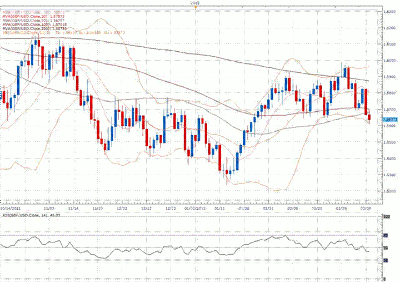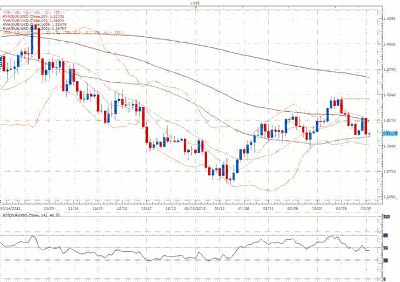Spurred by the China slowdown, look for a new phase in the global recession to badly hit commodity currencies like Australian, New Zealand, and Canadian dollars, predicts Joel Kruger of DailyFX.com.
A wider trade deficit and disturbingly weak export numbers from China over the weekend have done a good job of weighing on sentiment into this week, with world currencies coming under some added pressure against the US dollar (USD).
We have been warning for some time of a third phase of the global recession which should originate in China and spread to the commodity-correlated economies and other emerging markets. Many of these economies have managed to outperform throughout the crisis thus far, with investors seeing these regions as attractive alternatives to very troubled US and European economies.
However, we have always had a hard time digesting the safe-haven flows into these traditionally risk-correlated markets, and we finally think that things are catching up and we could soon see an aggressive liquidation of investment in these regions as the global recession enters its final phase.
As far as the major currencies are concerned, we are projecting underperformance in currencies like the Australian dollar (AUD), New Zealand dollar (NZD), and Canadian dollar (CAD) going forward, and we even see these currencies suffering against a recently-beaten-down euro (EUR).
Australia should be the most exposed given the wider yield differential, and with recent economic data out of the country also disappointing (see latest employment and GDP results), we are getting added confirmation for a bearish outlook on the commodity currency.
Elsewhere, another major shift in the FX markets is underway for the Japanese yen (JPY), as the currency continues to show evidence of a major structural shift that points to a significant top and material weakness going forward.
The most compelling evidence for this structural shift comes from the weekly USD/JPY chart, which shows the market closing back above the Ichimoku cloud for the first time since the summer of 2007:
While short-term studies are looking a little stretched and could warn of some pullbacks, we expect any pullbacks to now be very well supported above 78.00 in favor of fresh upside into the 85.00-90.00 area over the coming months. As a reminder, the nice thing about shorting the yen is that is doesn’t cost anything to hold the position on a daily basis.
Looking ahead, the key event risk for the week will come in the form of the FOMC rate decision. The central bank meeting will take on added significance with US economic data showing more consistent signs of recovery and increasing speculation that the Fed may need to reconsider their ultra-accommodative stance.
See related: The Forex Trading Week Ahead
While we do not expect the Fed to reverse policy just yet, Mr. Bernanke and company could look to firm things up just a bit by removing the “keeping rates ultra low through 2014” language. Should the Fed move in this direction, we could see added pressure on US equities as market participants become less comfortable with the idea of higher interest rates. We would also see a stronger US dollar on a narrowing of yield differentials.
Latest Price Action in EUR/USD
Last week’s aggressive EUR/USD pullback strengthens the prospects for the end of a corrective move in 2012 which has in fact stalled just ahead of 1.3500. From here, the risks are tilted to the downside, and a break below next key support by 1.2975 will be required to officially put the pressure on the downside and open an acceleration of declines back towards the 2012 lows at 1.2620. At this point, only a break back above 1.3300 would alleviate downside pressures and delay the outlook.
By Joel Kruger of DailyFX.com























